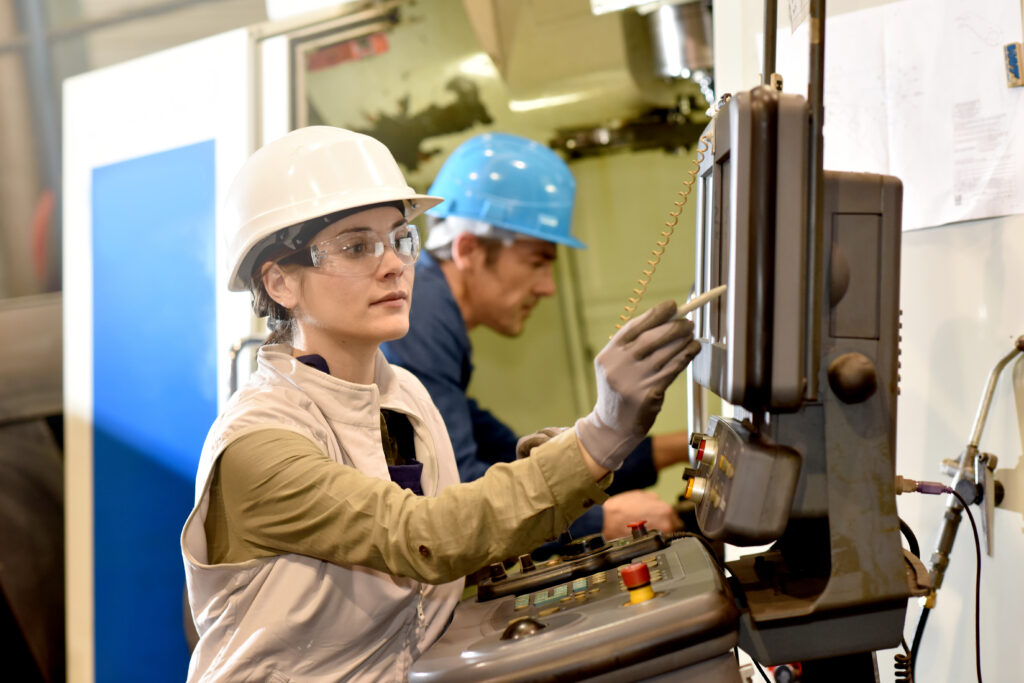14.07.2021
How RTLS systems impact revenue in the manufacturing, logistics or automotive industries

In the industrial environment, a variety of sensor technologies are used for tracking solutions, for example, to improve workflows and make entire processes more efficient. But it is not only purely technical processes that are improved as a result; people’s working environment can also be made more pleasant in this way, which in turn often leads to increased productivity.
In large production facilities, asset tracking alone usually means an enormous reduction in workload, as search times and walking distances can be reduced, increased security for lone workers is created and misinvestment or theft can be successfully counteracted. But only in combination with a real-time location system tracking solutions for the industry unfold their full potential. RTLS systems not only provide a complete overview of all moving load carriers, employees or vehicles in real time, they also and above all offer the possibility of analyzing this data and converting it into relevant KPIs, which then in turn provide information about room for maneuver to increase efficiency.
A real-time tracking system for industry or logistics is therefore not only a tool for increasing the efficiency of operational and production processes, but also an effective method of controlling costs. This is because an asset tracking system in real time, for example based on Bluetooth Low Energy (BLE), provides continuous data on the material flow. This makes processes from procurement to production to distribution transparent and can be actively controlled in real time. Production bottlenecks or overproduction can therefore be counteracted in advance, which is ultimately reflected in revenue.
3 key benefits of RTLS systems in industry:
Increase in efficiency
With the help of an RTLS system, you can create a digital image of the entire production and logistics operation. This means you get insight into every step and detail of your production process, including the location of items, whereabouts and walking routes of the workforce. You can use this data to make evaluations and take action to increase efficiency. At the same time, the ability to analyze data, for example on a dashboard integrated with your ERP system, eliminates tasks such as manual and time-consuming inventory and reduces paperwork.
Higher Productivity
Even though it is often equated or confused: Efficiency is not the same as productivity. Put this way, efficiency in the context of RTLS is the enabler of increased productivity in the industry. This is because the active use of an RTLS system allows for better planning, less manual effort and less wasted time, for example, in searching for inventory or assets you are looking for. If the RTLS system is also used to maintain machines within the production chain, long downtimes can also be avoided.
More pleasant and safe working
Better organization and fewer time-consuming and, above all, avoidable, mundane tasks also mean less stress for employees. Above all, more time for their actual tasks or for further training. This generally provides a more pleasant working environment and usually has a positive effect on motivation and productivity.
Furthermore, the tracking of people represents an additional safety factor. Especially in the case of lone workers, it is important to know where the worker is at any given moment so that help can be provided quickly in an emergency.
Which assets can be tracked?
Theoretically, everything can be tracked – from screwdrivers to forklifts. However, in terms of ROI, it doesn’t really make sense to track every asset, considering that a tag costs an average of €30. Accordingly, it makes sense to track particularly valuable or reusable items such as pallets, roll cages or forklifts, expensive machinery or high-voltage tools. Tracking also makes sense for rental equipment that can be used by employees or visitors on the factory premises, for example.
As an additional safety factor, people can of course also be tracked; this type of tracking is mostly used for lone workers in hazardous environments.
If you consider all of the above factors combined, you will see, even without in-depth specialist knowledge, that RTLS systems have a very positive effect on a company’s revenue, particularly in the area of industry or logistics. The prerequisite for this is, of course, that the system is based on clean planning with a focus on the central pain points and also that the RTLS is actively used later on. To ensure the legitimacy of the tracking system and a positive attitude towards it among the workforce, all groups involved should be included in the planning of an RTLS solution right from the beginning.